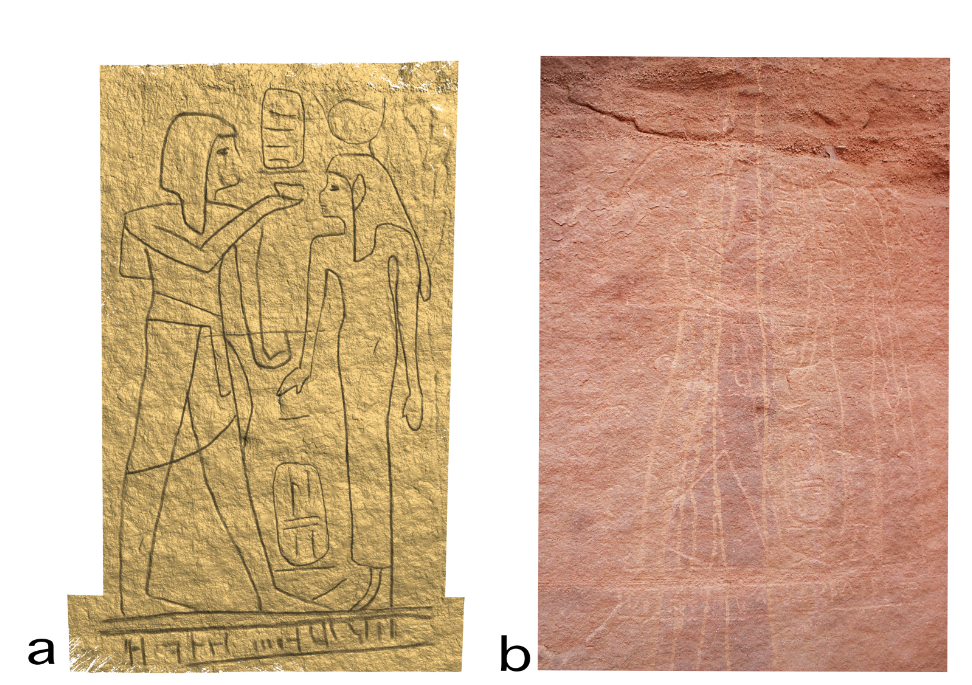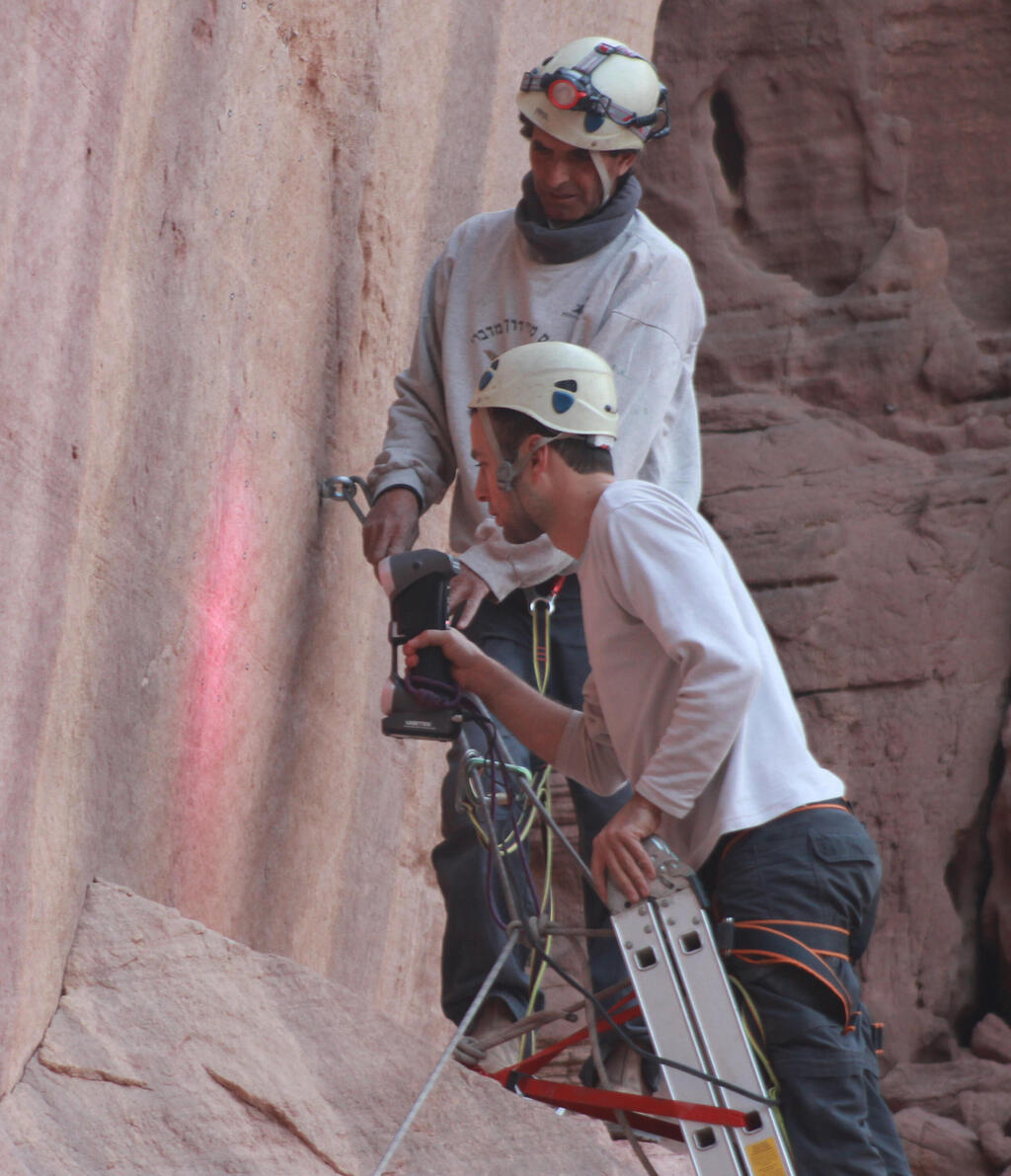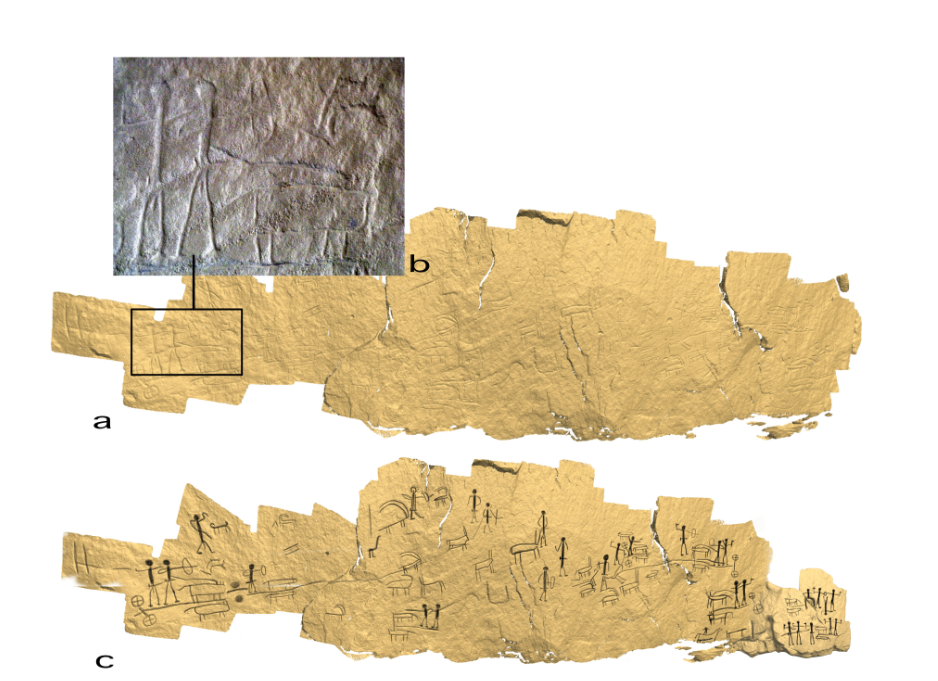Timna Park, one of southern Israel’s most well-known archaeological sites, is famous for its numerous findings related to the copper industry that existed in the area since the 6th millennium BCE. Now, a team of researchers from the Hebrew University of Jerusalem has uncovered the significance of the ancient rock carvings found in the park for the first time, using advanced three-dimensional digital technology.
The study’s findings, recently published in the Journal of Archaeological Method and Theory in collaboration with Timna Park, the Lev Academic Center, and the Charles W. Wilson Foundation, unveil the deliberate choices made by the carvers — based primarily on visual and theoretical considerations, not merely technical ones.
3 View gallery


Left: a 3D model of the stele carving found in Timant, Right: Stele carving in the archeological park
(Photo: Liron Naronsky)
For decades, researchers from around the world have attempted to decipher the meaning of the various carvings located in Timna Park dated to the 14th to the 12th centuries BCE.
Using advanced 3D scanners and a unique software they developed, the research team led by Prof. Lior Grossman and doctoral student Lena Dubinsky from the Computational Archaeology Laboratory conducted a comparison of different carving techniques and revealed the complex details and cultural ideas that drove the creative process behind it.
"Our study focuses on two main carvings in the park — the Chariot Carving, the largest in the area, and the carving made according to Egyptian canon, depicting the great pharaohs," Dubinsky explained. "We conducted comparisons of the techniques used in these carvings, alongside examination of tool marks in the location’s copper mines.
“The innovative software we developed helped us produce highly accurate digital models of the carvings and characterize the graphic language and cultural nuances of ancient societies — not only based on observation but also relying on advanced technological analysis."
The study’s findings reveal the carvers' decisions weren’t only based on their technological constraints but also on visual and conceptual considerations. Prof. Grossman said, "We were able to identify intentional choices by the creators, shaping the appearance of the carved lines and reflecting deeper cultural ideas."
Dubinsky added, "For instance, we identified that while chariot and animal images were created using a uniform technique, human images were made using a combination of techniques, with the head and body being the dominant elements of the depiction. Using computational means, we were able to characterize a unique visual language utilized by them."
According to the researchers, the findings not only uncover the secrets behind the ancient carvings but also offer new tools for future archaeological research. "Our method allows us to identify features the human eye can’t see and may serve as an aid for further studies in archaeology and art history to gain a better understanding of human cultural heritage," Prof. Grossman concluded.



